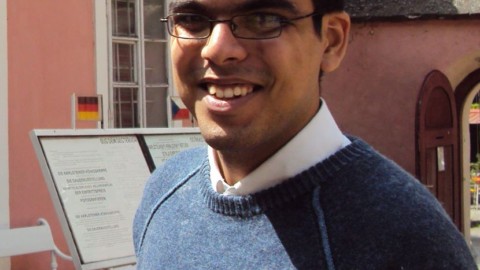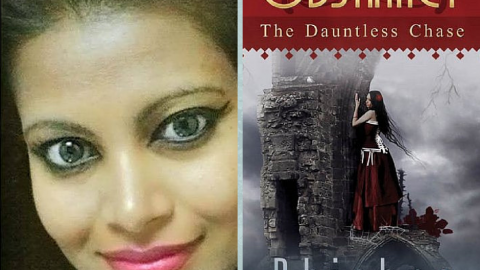To be honest, during my childhood days, I was always fascinated by trains and motormen, and I personally know so many others who were, and are, so deeply intrigued by the railways. But the biggest enthusiast is perhaps Mr. Rajendra B. Aklekar, a Mumbai-based Journalist, who has very recently penned an amazingly written and researched book on the Indian railways – Halt Station India: A Dramatic Tale Of Nation’s First Railway Lines! He interacted with Spectralhues about the Indian railways, his fascination, the journey of his book and the aspects the government needs to work on to electrify the railway! Here are the transcripts:
Mr. Aklekar, welcome Spectralhues.com, sir. Beginning with the interview, tell us, and our readers, about your love affair with railways.
 It all begun during my journey to school by train two years before my 10th. I used to stay at Kurla and was a student of King George School (Indian Edu Society) at Matunga. I used to travel day in and day out by suburban trains and that’s when I could alone explore the line, the trains and the network as, like everyone, trains and engines fascinated me. Mumbai is a sea of railway and slowly as I begun to read on railways out of curiosity, I realised that the railways in Mumbai were the first ever to be built in India.
It all begun during my journey to school by train two years before my 10th. I used to stay at Kurla and was a student of King George School (Indian Edu Society) at Matunga. I used to travel day in and day out by suburban trains and that’s when I could alone explore the line, the trains and the network as, like everyone, trains and engines fascinated me. Mumbai is a sea of railway and slowly as I begun to read on railways out of curiosity, I realised that the railways in Mumbai were the first ever to be built in India.
This was an eye-opener and I was surprised to learn the fact that I travelled on a piece of history, the oldest and pioneering railway line of India. As I learnt that the first railway had been named the Great Indian Peninsula Railway, I started looking in that direction and I found the railway responding back. Stations, rails, tracks, signages, there were still a lot of things with those old iconic logos of GIPR. (This was late 1980s and early 1990). The GIPR fascinated me. I begun to live GIPR. How would the first train ride would have been? It ran on the same blueprint (as I had read it). How was the terrain back then? What all did the first traveller see from the window? This all read to further reading—every small bit of information on the subject that came my way.
How do you describe your love and fascination towards railways, sir?
Trains and railways have been a strong fascination since childhood. Every time, I feel low, I go to the nearest railway line to watch trains to get cheered up. It powers me for the rest of the day. As trains do, so does the magnificent Mumbai CST station. These things put back life in me.
When did the journey of Halt Station India begin?
A book was never in the planning stage initially, but as I walked down the line up and down in heat and rain to document the relics of the first railway, the idea of compiling all of it into a book came to me. But writing a book, managing your existing job, is a challenging task. It requires discipline and high quality of research. Just walking down the line up and down, compiling notes and reading all about the subject is not enough. If I had to have a publisher, the work required having a theme, it needed to tell something and conclude something. It had to be unchallenged in any part of the world.  It required much more. Initially, no publisher was interested in it for more than two to three years and I thought of self-publishing it. But then thanks to my senior editor in Mumbai RN Bhaskar sir who put me onto the right people. I also want to thank my editor at Rupa Publications Dharini Bhaskar who further fine-tuned my work. Halt Station India is a work of more than a decade long documentation effort.
It required much more. Initially, no publisher was interested in it for more than two to three years and I thought of self-publishing it. But then thanks to my senior editor in Mumbai RN Bhaskar sir who put me onto the right people. I also want to thank my editor at Rupa Publications Dharini Bhaskar who further fine-tuned my work. Halt Station India is a work of more than a decade long documentation effort.
What efforts were made to come up with such a well-researched, compiled and a charming book on the railways?
After more than four years of research, I was breathing GIPR. Every new research led to new questions and I would remain up throughout nights getting answers to them. At times, I had to go back to the spot near the tracks to verify the findings. Adjusting these in your daily routine was a very difficult task. But if you are driven, you find time. It was pure joy to track down descendents of those who were involved with the first lines. Reading books and literature of that era in moth-eaten pages of old books. I was almost living in a Bombay that was 150 years old. The technical data had to be decoded and so was it necessary to identify the old relics for which I took up a course in museology from the Prince of Wales Museum (now called CSMVS), Mumbai. Many times had to accompany senior officials on their trips to get a perspective of actual working. The data, research gathered had to be cross-checked, verified and corrected. But it was enjoyable and like finding treasure.
Did you face any hurdles while doing a long research for the book?
No hurdles as such. The biggest co-operation I received was from the Indian Railways in Mumbai.
How would you describe the progression and journey of Indian railways, right from the time they were introduced in Mumbai in 1853?
The journey that started in 1853 with 21km has today reached 63,028km. It is now a major mode of transport in India and many rural places would not be connected if the railways did not run this way. Railways make the idea of a India a reality. As railway historian Ian J Kerr says. ‘No railways, no India’
What all aspects do you think our government needs to work upon to modernize and electrify our railway?
The existing lines cannot take more. We need to have dedicated, modern hi-speed lines in addition to the existing network. Any addition or functional changes to existing lines would spoil everything. A parallel modern network needs to be built.
Have our previous governments focused enough on the development of railway in the country? And what hopes are you keeping from the present government?
 Development of railways is all about providing adequate funding, which previous governments have missed many a times. The present government is looking at answers and the Bibek Debroy committee’s interim report indeed does have some solutions in the form of asking railways to cut flab. If the government is serious, it should take up the Debroy committee report seriously.
Development of railways is all about providing adequate funding, which previous governments have missed many a times. The present government is looking at answers and the Bibek Debroy committee’s interim report indeed does have some solutions in the form of asking railways to cut flab. If the government is serious, it should take up the Debroy committee report seriously.
How will you describe your journey in journalism, sir?
Twenty years now. My first news reports were published in The Free Press Journal exactly in 1995 as a freelancer. A year later I took my first formal job as a sub-editor in the Daily newspaper started by the firebrand editor Rusi Karanjia. I then moved on to several newspapers doing various assignments and today am with the ToI Group’s Mumbai Mirror newspaper.
What do you enjoy the most – being a successful journalist or an author?
Both jobs have their own challenges and I do enjoy both
How do you think can creativity be enhanced in the world of non-fiction?
If you tell the world the stories the way they have been, it does add to value and enhances your non-fiction work
Being a wise person, what would your message be for the railway enthusiasts as well as the readers, at large?
There is one thing to learn from the railways and trains. They keep moving whatsoever happens. They need to reach the destination, in any weather and circumstances, once they embark on the journey. That is the spirit of railways that we have to learn from. Amen!
Thank you so much for interacting, sir! 🙂
________________________________________________________________________________________
Halt Station India: A Dramatic Tale Of Nation’s First Railway Lines.
Paperback: 227 pages
Publisher: Rupa Publications India; First edition
Language: English
ISBN-10: 8129134977
ISBN-13: 978-8129134974
Product Dimensions: 21.6 x 14 cm
The book can be purchased in India via:
Flipkart—
Amazon India
The book can be purchased in the UK via:
The book can be purchased in the US and other countries via:
Tags: Book on the Indian railways Halt Station India Interview Rajendra Aklekar Rajendra Aklekar interview









